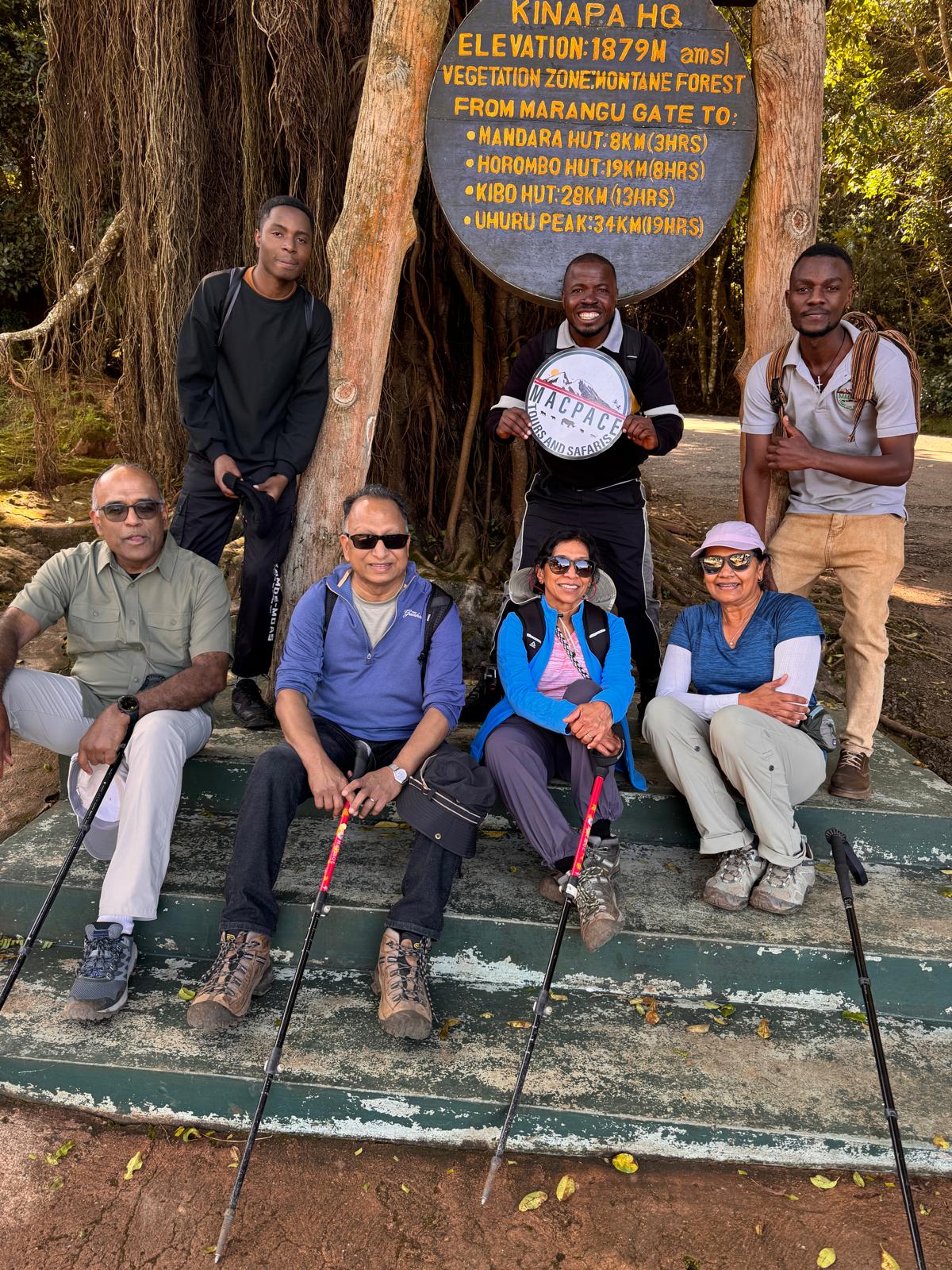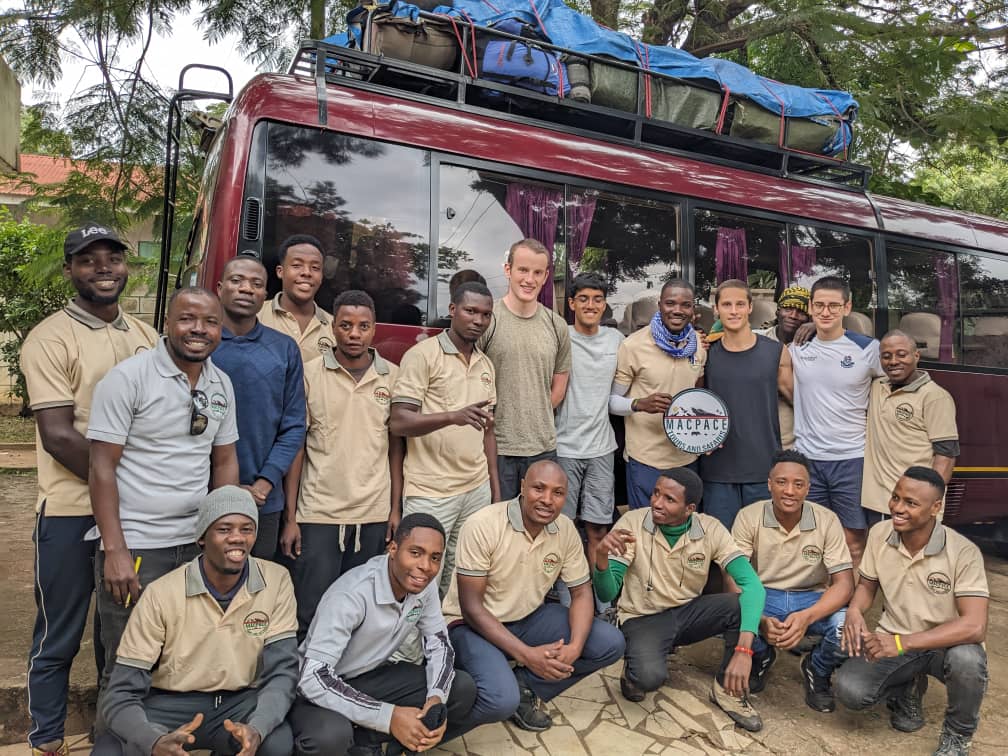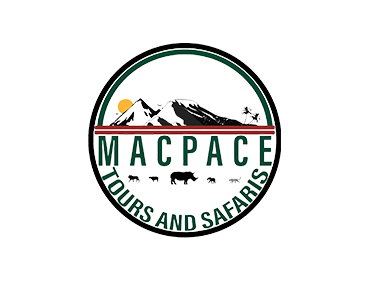The Seven Climatic Zones of Kilimanjaro | A Journey Through Nature
Mount Kilimanjaro is more than just Africa’s highest peak, it’s a living showcase of the Earth’s diversity. As you climb its slopes, you’ll pass through seven distinct climatic zones, each one like stepping into a different world. From the fertile cultivation zone at the mountain’s base, through lush rainforests alive with monkeys and birds, to the heather-strewn moorlands and stark alpine desert, and finally the icy arctic summit, Kilimanjaro offers travelers the rare chance to experience the equivalent of a journey from the tropics to the Arctic, all in a single trek.
Every zone holds its own wonders: vibrant wildlife, unique plants adapted to extreme conditions, sweeping landscapes, and cultural connections with the Chagga people who live in harmony at the mountain’s base. For eco-tourists and nature lovers, this makes Kilimanjaro one of the most extraordinary destinations on Earth.
we don’t just guide you to the summit, we guide you through the story of the mountain. Our expert guides help you understand the ecosystems you walk through, the wildlife you encounter, and the cultural traditions rooted in Kilimanjaro’s slopes. Climbing with us means experiencing the mountain not only as a challenge but also as a journey of discovery through nature’s seven wonders on a single mountain.
The Seven Climatic Zones of Kilimanjaro
1. Cultivation Zone (800–1,800 m)
Fertile volcanic soils nurture small villages, banana groves, and coffee plantations. Local Chagga communities thrive here, blending agriculture with mountain life. It’s the cultural heartbeat of Kilimanjaro and the gateway to your adventure.
🌿 Spotlight Species: African civet, banana groves, and highland coffee shrubs.
2. Montane Forest Zone (1,800–2,800 m)
Step into a lush rainforest alive with wildlife. Towering fig trees, orchids, and ferns create a green canopy, while colobus monkeys swing playfully overhead.
🐦 Spotlight Species: Hartlaub’s turaco, black-and-white colobus monkey.
3. Heath Zone (2,800–4,000 m)
The forest thins into open moorlands. Giant heathers and wildflowers dominate, with surreal landscapes cloaked in mist.
🌸 Spotlight Species: Giant groundsel, Kilimanjaro everlasting flower.
4. Moorland Zone (3,500–4,000 m)
Sparse vegetation of shrubs and lobelias create a rugged, dreamlike setting. Mist and morning frost give this zone an otherworldly character.
🌼 Spotlight Species: Giant lobelia, African stonechat bird.
5. Alpine Desert Zone (4,000–5,000 m)
Dry, barren, and rocky. Life is scarce, but a few resilient mosses and lichens cling to survival in this harsh environment.
🪨 Spotlight Species: Lichens, alpine kestrels.
6. Arctic Zone (5,000–5,895 m)
At the summit, glaciers and snowfields dominate. Frigid winds sweep over bare rock and ice, where no plants or animals can survive.
❄️ Spotlight Feature: The Furtwängler Glacier (rapidly retreating due to climate change).
7. Summit: The Roof of Africa
Reaching Uhuru Peak, you’re rewarded with sweeping views across Tanzania and Kenya, glaciers gleaming beneath the morning sun, and a sense of awe at the natural wonders you’ve walked through. In just one climb, you’ve traveled through ecosystems that would take thousands of kilometers to encounter elsewhere.
Conservation and Climate Change Spotlight
Kilimanjaro’s zones are not frozen in time. Climate change is reshaping the mountain, threatening its ecosystems and the communities that depend on them:
Impacts in the Cultivation and Montane Forest Zones
-
Shifting rainfall patterns affect banana and coffee farming, with noticeable changes in coffee quality.
-
Habitat fragmentation threatens monkeys, birds, and other forest dwellers.
Mounting Pressures in Alpine and Arctic Zones
-
Glaciers are melting at alarming rates, exposing bare rock and increasing the risk of rockfalls.
-
Reduced ice cover impacts downstream water availability for people and wildlife.
For all Eco-Tourists
-
Practice leave-no-trace ethics on the trail.
-
Support community-led conservation and reforestation programs.
-
Choose responsible guiding companies that minimize impact and invest back into local communities.
Cultural–Environmental Interplay
The Chagga people at Kilimanjaro’s base have lived in harmony with the mountain for generations. Their sustainable agriculture, coffee, bananas, and livestock, thrives on volcanic soils. Cultural rituals and storytelling link the people deeply to Kilimanjaro’s spirit.
📝 Visitor Etiquette Tips:
-
Always ask permission before taking photos in villages.
-
Support local farmers by buying coffee or crafts.
-
Respect cultural practices and traditions.
Safety and Preparation Advice
Each zone presents unique challenges for climbers:
-
Cultivation & Montane Forest: Stay hydrated, protect against insects, and carry light rain gear.
-
Heath & Moorland: Pacing is crucial, acclimatize gradually and watch for altitude symptoms.
-
Alpine Desert: Expect extreme temperature swings; layer clothing carefully.
-
Arctic Summit: Oxygen is thin, move slowly, stay warm, and listen to your guide.
Quick Checklist by Zone:
-
Lightweight rain gear (lower zones)
-
Trekking poles for moorland and higher
-
Layered clothing for desert and summit
-
Altitude sickness awareness and acclimatization days
Sustainability and Visitor Footprint
Climbers leave a mark, but with mindfulness, it can be a positive one:
-
Carry all waste back down, pack in, pack out.
-
Stay on marked trails to avoid erosion.
-
Use eco-certified operators and guides.
-
Support Kilimanjaro National Park and community conservation programs.
Photography and Experience Guide
For eco-tourists and photographers, Kilimanjaro is a dream:
-
Cultivation & Montane Forest: Early morning light brings vibrant colors to villages and forests.
-
Moorland & Alpine Desert: Sunset and sunrise offer dramatic silhouettes against volcanic rock.
-
Summit: Photograph glaciers at dawn for golden light, while respecting safety and not lingering too long in thin air.
📸 Pro Tip: Always respect wildlife and fellow trekkers. Avoid drones unless permitted.
Final Thoughts
Climbing Kilimanjaro is not only about reaching Africa’s highest summit, it’s about journeying through seven incredible climatic zones, each with its own landscapes, wildlife, and cultural stories. Few places on Earth allow you to walk from tropical farmlands to icy glaciers in a matter of days, and fewer still leave such a lasting impression on the soul.
we believe every climb should be more than a challenge, it should be an experience. Our dedicated guides and support team ensure that your trek is safe, sustainable, and deeply enriching. As you pass through rainforests alive with monkeys, cross surreal alpine deserts, and stand atop the majestic arctic summit, we’ll be with you every step of the way, helping you discover the mountain’s secrets while respecting its fragile ecosystems.
When you choose to climb with Macpace, you’re not just conquering Kilimanjaro, you’re experiencing it in the most meaningful and responsible way possible. The “Roof of Africa” is waiting, are you ready to take the journey with us?





